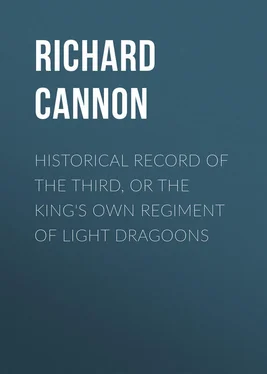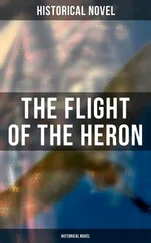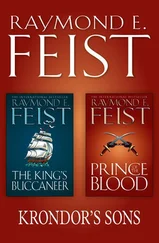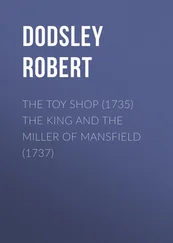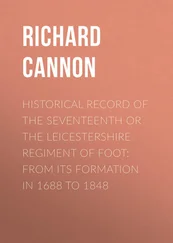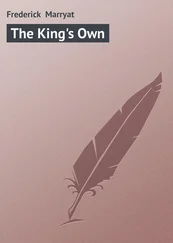Richard Cannon - Historical Record of the Third, Or the King's Own Regiment of Light Dragoons
Здесь есть возможность читать онлайн «Richard Cannon - Historical Record of the Third, Or the King's Own Regiment of Light Dragoons» — ознакомительный отрывок электронной книги совершенно бесплатно, а после прочтения отрывка купить полную версию. В некоторых случаях можно слушать аудио, скачать через торрент в формате fb2 и присутствует краткое содержание. Издательство: Иностранный паблик, Жанр: foreign_antique, foreign_prose, на английском языке. Описание произведения, (предисловие) а так же отзывы посетителей доступны на портале библиотеки ЛибКат.
- Название:Historical Record of the Third, Or the King's Own Regiment of Light Dragoons
- Автор:
- Издательство:Иностранный паблик
- Жанр:
- Год:неизвестен
- ISBN:нет данных
- Рейтинг книги:3 / 5. Голосов: 1
-
Избранное:Добавить в избранное
- Отзывы:
-
Ваша оценка:
- 60
- 1
- 2
- 3
- 4
- 5
Historical Record of the Third, Or the King's Own Regiment of Light Dragoons: краткое содержание, описание и аннотация
Предлагаем к чтению аннотацию, описание, краткое содержание или предисловие (зависит от того, что написал сам автор книги «Historical Record of the Third, Or the King's Own Regiment of Light Dragoons»). Если вы не нашли необходимую информацию о книге — напишите в комментариях, мы постараемся отыскать её.
Historical Record of the Third, Or the King's Own Regiment of Light Dragoons — читать онлайн ознакомительный отрывок
Ниже представлен текст книги, разбитый по страницам. Система сохранения места последней прочитанной страницы, позволяет с удобством читать онлайн бесплатно книгу «Historical Record of the Third, Or the King's Own Regiment of Light Dragoons», без необходимости каждый раз заново искать на чём Вы остановились. Поставьте закладку, и сможете в любой момент перейти на страницу, на которой закончили чтение.
Интервал:
Закладка:
His Majesty's thanks and particular satisfaction were communicated to His Grace the Duke of Kingston, for his zeal and affection for His Majesty's person and Government; and His Grace was desired to convey to the officers and soldiers His Majesty's high sense of their loyalty, activity, and gallant behaviour, at a period of national danger. The regiment was afterwards disbanded at Nottingham, and nearly every man engaged in the Regiment of Light Dragoons, of which, as a signal mark of honour and distinction, His Royal Highness the Duke of Cumberland was appointed Colonel.
The Duke of Cumberland's Light Dragoons were mounted on active nag-tailed horses, from fourteen and a half to fifteen hands high. The men were from five feet eight to five feet nine inches in height; and their equipment was upon a new and light plan, but retaining the cocked hat of the Heavy Dragoon pattern. This regiment served in the Netherlands, with the Army commanded by His Royal Highness the Duke of Cumberland: its general usefulness was fully established, and it distinguished itself at the battle of Val, in 1747. The treaty of Aix-la-Chapelle having put an end to the war, it returned to England, and was disbanded in 1749.
From this period the value of light horsemen was more appreciated in England than formerly; the general utility of this arm, on home and foreign service, had been fully proved; and at the commencement of hostilities with France, in 1755, King George II. resolved to possess the advantage of a body of Light Cavalry in the approaching contest. His Majesty accordingly commanded a troop of Light Dragoons to be added to the First, Second, and Third Regiments of Dragoon Guards, and First, Second, Third, Fourth, Sixth, Seventh, Tenth, and Eleventh Regiments of Dragoons. The First, Second, Third, and Fourth Irish Horse (now Fourth, Fifth, Sixth, and Seventh Dragoon Guards), and the Fifth, Eighth, Ninth, Twelfth, Thirteenth, and Fourteenth Dragoons, being on the Irish establishment, did not receive the same addition.
These troops of Light Dragoons were mounted, armed, equipped, and trained, according to specific instructions, calculated to render them available for the services for which they were designed. Several of them were reviewed in Hyde Park by His Majesty; and their neat appearance, celerity of movement, and the spirited and exact manner in which they performed their evolutions, were much admired.
Nine of these troops were formed into a brigade in 1758, under the command of one of the King's aides-de-camp, Colonel George Augustus Eliott, of the Horse Grenadier Guards; and they were employed in the expeditions to the coast of France under Charles Duke of Marlborough and Lieut. – General Bligh. They landed in France twice; skirmished with the French Cavalry; and throughout these enterprises they evinced activity, spirit, and general usefulness. After their return to England, they were augmented to 125 men per troop.
At this period, the war on the Continent had involved most of the European states; and the extended and active operations which were taking place in Germany rendered it necessary for a British force to join the Allied Army under Prince Ferdinand of Brunswick. This gave rise to a further augmentation of the Army; and the increased estimation in which Light Cavalry was held induced the King to give directions for the raising of entire Regiments of Light Dragoons , in addition to the five Regiments of Horse, three of Dragoon Guards, and fourteen of Dragoons, already on the British and Irish establishments. The following corps were accordingly embodied: —
Fifteenth, in England, by Colonel George A. Eliott; – now the Fifteenth, or the King's Hussars.
Sixteenth, in England, by Lieut. – Colonel John Burgoyne; – now the Sixteenth, or the Queen's Lancers.
Seventeenth, in Scotland, by Captain Lord Aberdour; – disbanded in 1763.
Eighteenth, in England, by Lieut. – Colonel John Hale; – now the Seventeenth Lancers.
Nineteenth, in Ireland, by Lieut. – Colonel Lord Drogheda; – numbered the Eighteenth in 1763; constituted Hussars in 1807; and after performing much valuable service at home and abroad, it was disbanded at Newbridge, in Ireland, in 1821.
Twentieth, in Ireland, by Captain Sir James Caldwell; – disbanded in 1763.
Twenty-first, or Royal Foresters, in England by Lieut. – General the Marquis of Granby, and Colonel Lord Robert Sutton; – disbanded in 1763.
After the peace of Fontainebleau, three of these corps were disbanded, and the other four continued in the service. The light troops attached to the heavy regiments were also disbanded, but a few men of each troop were afterwards equipped as Light Dragoons.
A more perfect knowledge of the efficiency and capabilities of Light Cavalry, acquired during the campaigns in Germany and Portugal, had advanced the estimation in which that arm was held; and, in 1768, the Twelfth Dragoons (one of the heavy regiments raised by King George I. in 1715), underwent a change of equipment and clothing, and was constituted a corps of Light Dragoons , by General Carpenter, in Ireland.
This alteration served as a precedent for subsequent changes; and further experience, during the American war, from 1775 to 1783, con[Pg xxviii]firming the value of Light Cavalry, the Seventh, Eighth, Ninth, Tenth, Eleventh, Thirteenth, and Fourteenth Regiments of Dragoons were changed from heavy to light . The Light Dragoons attached to the heavy regiments were incorporated into newly-raised corps, and the following regiments of
Nineteenth, – by Major-General Russell Manners; – disbanded in 1783.
Twentieth, – by Major-General Richard Burton Phillipson; – disbanded in 1783.
Twenty-first, – by Major-General John Douglas; – disbanded in 1783.
Twenty-second, – by Lieut. – Colonel John Lord Sheffield; – disbanded in 1783.
Twenty-third, – by Lieut. – General Sir John Burgoyne, Baronet, for service in India, and was numbered the Nineteenth after the peace in 1783. This regiment signalized itself on numerous occasions in India, and was rewarded with the honour of bearing on its guidons and appointments the Elephant , with the words Assaye and Seringapatam . The word Niagara was also added in commemoration of the gallantry of two troops, in the year 1813, in North America. In 1817 it was constituted a corps of Lancers. It was disbanded in Ireland in 1821.
Thus a few years had produced a great change in the British Army. Twenty-five years previously to the termination of the American war there was not a single Light Dragoon Regiment in the Service, and in 1783 there were seventeen; four of them were disbanded at that period, and thirteen retained in the Service.
Soon after the termination of the American war, the French monarch having, by aiding the rebellious British provincials, taught his own subjects a lesson of insubordination, was deprived of the reins of government; and the violent conduct of the French revolutionists in the West Indies occasioned the Twentieth or Jamaica Regiment of Light Dragoons to be raised in 1791 by Colonel Henry F. Gardner, for service in that island. Besides its services in Jamaica, detachments of this regiment served at Malta; Sicily; at the taking of the Cape of Good Hope, in 1806; at the capture of Alexandria, in 1807; at the attack on Monte Video; in Portugal; at Genoa; and on the eastern coast of Spain; and acquired the honour of bearing the word Peninsula on its guidons and appointments. It was disbanded in Ireland in 1818.
Читать дальшеИнтервал:
Закладка:
Похожие книги на «Historical Record of the Third, Or the King's Own Regiment of Light Dragoons»
Представляем Вашему вниманию похожие книги на «Historical Record of the Third, Or the King's Own Regiment of Light Dragoons» списком для выбора. Мы отобрали схожую по названию и смыслу литературу в надежде предоставить читателям больше вариантов отыскать новые, интересные, ещё непрочитанные произведения.
Обсуждение, отзывы о книге «Historical Record of the Third, Or the King's Own Regiment of Light Dragoons» и просто собственные мнения читателей. Оставьте ваши комментарии, напишите, что Вы думаете о произведении, его смысле или главных героях. Укажите что конкретно понравилось, а что нет, и почему Вы так считаете.
